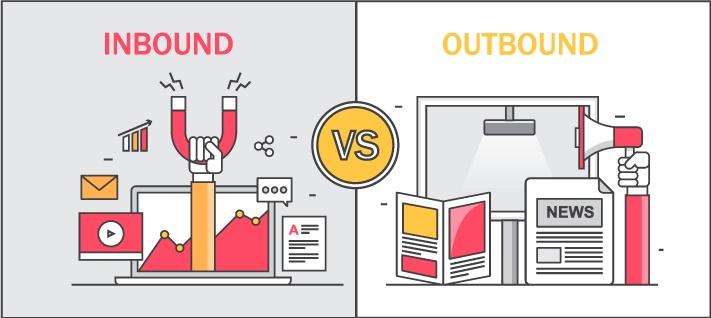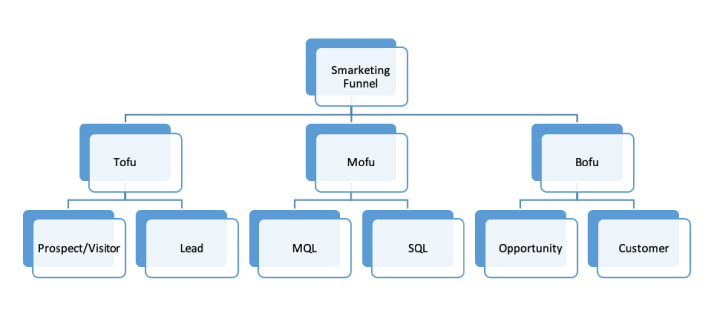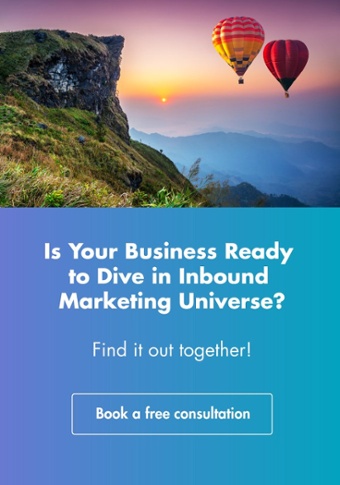There is no doubt about the fact that over the last decade or two, the Market has undergone drastic changes. And almost all of these changes can be traced back to the Internet, which once assimilated into the market, swooped in and shifted the focus from Outbound Marketing to Inbound Marketing.
What is the difference between the two and what does it imply?
What’s the difference between Inbound and Outbound Marketing?
The typical distinction between the two is the categorical difference between the active parties in both these marketing techniques. In the Outbound Marketing technique, it was the company that actively sought out customers and aggressively tried to sell their products and services. The sources that were used to broadcast sales message that pushed customers to them were the TV, telephone, Yellow pages, Newspaper, radio, etc.
But as we all know, the Internet has bid the Outbound Marketing to take a backseat. There have been massive changes in customer behavior patterns as a result of which these techniques have subsequently lost their effectiveness. It is only a matter of time till they become null and void altogether. To replace this, the Inbound Marketing Methodology has evolved which goes hand in hand with the Internet.
Now that the consumers have the Internet to do their own research before purchasing a product or a service, they are the active participant who does the shopping, rather than being the passive customer being sold at by the Outbound Marketing techniques. And this is why in the present age of Digitalization, the traditional Outbound Marketing fails to successfully transform leads into customers.
So, now that you are no longer able to generate enough leads by using the traditional marketing techniques, Inbound Marketing is an inexpensive and effective technique solution to your lead generation and conversion needs.
But before we move on to Inbound Marketing, let’s first talk about Leads and Leads Generation.

What are Leads and why are they important?
Leads in the marketing terminology refer to the first interaction between the company and the potential customer. It can be in the form of a subscription or an enquiry or literally anything that each individual company identifies as a lead for its sales.
Lead Generation is conversion of prospective consumers into potential customers who indicate interest in a company’s product or service. Leads, when taken all the way through, without losing them mid-way are what transforms into Sales.
How can you transform Leads into Customers?
Following the current trends in the market and customer behavior, the most reliable and sure fire way to transform leads is Inbound Marketing. Inbound Marketing achieves this feat by providing all information a customer needs in order to make an informed decision. In this technique, the consumer is the active member who approaches the company based on his/her needs.
It begins by a visitor on your website, or your social media platform, it continues by them being engaged by the information you have to offer and it ends by them being delighting by your assistance and finally making a purchase from you. It involves, on the part of the company – providing relevant content to prospective consumers, and helping them through the buyer’s journey till they are ready to make the purchase.
What is this Buyer’s Journey and why should you pay attention to it?
The Buyer’s Journey is the journey that a consumer undertakes starting from the moment he/she registers a need or a problem, and which ends when they successfully make a purchase. The buyer’s journey, when looked at from the perspective of the company is the transformation of leads into customers.
“Leads are just your inbound marketing’s core. You work to get them and then to convert them into clients.”Tweet
How does the Buyer’s Journey lead to conversion of leads into customers?
A typical Inbound Marketing technique begins by providing as much information as possible to the prospective consumers. This can be better understood with the help of the sales funnel. The sales funnel is divided into three sections – ToFu, MoFu and BoFu.
The ToFu or the Top-of-the-Funnel refers to the first stage of Lead Acquisition. It essentially means that you provide content to the consumer that helps them to be identify their pain point, be aware about and explore the problem. The content that is provided at this stage is short, and readable which is further shared online in the form of blogs, infographics, eBooks, website landing pages, social media updates, audio/video podcasts etc.
Once the consumer identifies his/her pain point, the next step is to find solutions regarding those problems by collecting detailed information. This brings us to the second stage of the sales funnel – the MoFu.
MoFu stands for Middle-of-the-Funnel, where the lead is nurtured by engaging it with longer content that deals with case studies, whitepapers, etc. This is the kind of information that gives detailed consideration to the possible solutions. These are then open to evaluation and simultaneous analyses by the prospective lead. This stage is basically nurturing the lead by investing as much time as needed, which ideally varies according to the product or the service.

Now, when the consumer has figured out how to resolve his/her problem, it means that he/she has reached the last stage of the sales funnel.
BoFu or the Bottom-of-the-Funnel is the stage where the conversion of leads into customers happen. This is where they compare the vendors and make the final purchase.
The important thing about this process of transformation of leads into conversion is that all these three stages of the sales funnel are interconnected and interlinked. The leads organically flow from one stage to another. If a stage is eliminated or skipped in the haste of conversion of leads into customers the whole structure collapses. Hence, each stage is crucial in itself. The entire process must start with the recognition of the problem, which further leads to the exploration of prospective solutions. It is then followed by an analysis of all the possible solutions, which ultimately leads to a final decision of purchasing the product or service. And voila! Leads have been converted to sales.
Inbound Marketing is providing Content with a Context i.e. the information provided by the company at each level of the sales funnel. This information varies according to the scope of that particular level and the expectations of the consumers. The key to a successful Inbound Marketing conversion is to run it in across multiple channels. The different online platforms that are generally used for this are– Website, Blogs, Facebook, Twitter, LinkedIn, Snapchat, Instagram, Youtube, etc.
What is the nature of the relationship between the company and the consumer under the Inbound Marketing?
Marketing is a human interaction. The essence of lead conversion, like every other Marketing technique is to slowly and steadily build a trusting relationship with the consumers. The interaction between the company and the consumer is to be treated like a human relationship, which will take time to be strengthened.
And so, the most accurate way to look at this process of transformation is in the sense of creating a relationship with the prospective buyers and facilitating their movement through a sequential process. This process starts with attraction through content creation which targets the potential pain points of the consumers. This leads to brand awareness, which generates leads by nurturing. This is a cost-reduction technique, which is in direct contrast to the expensive traditional Outbound Marketing Techniques.
Marketing is a long-term process. No company would want to invest time, effort and not to mention money in marketing as a one-time sale. And neither should they do so. It should be treated as a long term process that continues for years and yields sales for a longer period of time. The endgame is to create a loyal customer and not to successfully sell a single product or a service. And so, the most important factor is to provide enough value to the customer to let them be in for the long haul.
Do you need help in finding new leads?
Let us help you!

